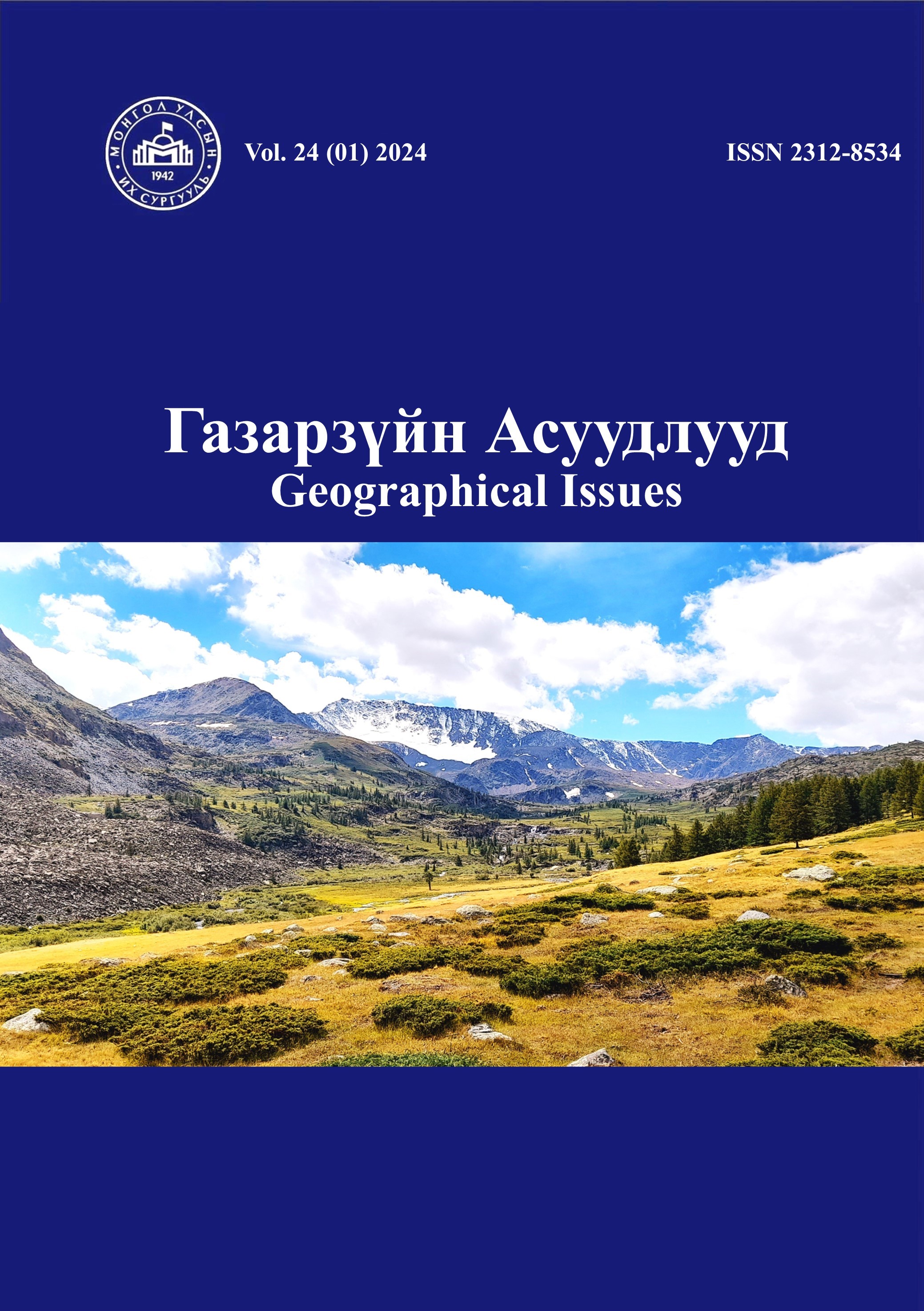Implication of climate change on the volume of lakes in the forest-steppe zone, Central Mongolia
Ойт хээрийн бүсийн нууруудын эзэлхүүнд уур амьсгалын өөрчлөлтийн үзүүлэх нөлөө
Keywords:
Khangay mountain, Terkhiin Tsagaan Lake, Ulaagchiny Khar Lake, Water volume change, Trend analysis, Climate changeAbstract
The two large lakes in the center of Mongolia, located between the Khangay mountain ranges and branch ranges, are the sites of environmental changes affected by recent climate change. There is scarce research in Mongolia that examines and evaluates how climate change affects major tourism destinations that are part of the forest-steppe region with an abundance of climate resources. In this study, Trend analysis, Statistical analysis methods, and Water Normalized index (NDWI) were used. The results indicated that, in the area of Ulaagchiny Khar Lake, Terkhiin Tsagaan Lake, evaporation increased when the Mann-Kendall value of the average air temperature trend increased by Z=2.61 and Z=0.90, respectively. Precipitation decreased Z=-0.65 or sharply in the vicinity of Ulaagchiny Khar Lake, and the average air temperature increased, resulting in a sharp decrease in the volume of the lake y=-0.0067x+0.5307 R²=0.6957. But by time's periodicity, the water's volume increased from 1993-1999 before abruptly declining after that. However, precipitation Z=2.72 trend increased near Terkhiin Tsagaan Lake, while the lake's volume slightly decreased y=-0.0003x+0.3702 R²=0.0341, which is associated with an increase in air temperature. In terms of time, the volume of the lake around the Terkhiin Tsagaan Lake fluctuates according to the average annual temperature and precipitation. Given that the research region is located in the zone of permafrost discontinuous and continuous, probably, the recent permafrost loss has indirectly impacted the lakes' volume. It was determined that the decreased changes in the volume of these lakes are expected to increase in the future. This research may be used as a model to predict future environmental concerns caused by decreased water volume as a result of present climate change in lakes in semi-arid and dry climates.
Downloads
Downloads
Published
How to Cite
Issue
Section
License

This work is licensed under a Creative Commons Attribution-NonCommercial-ShareAlike 4.0 International License.






